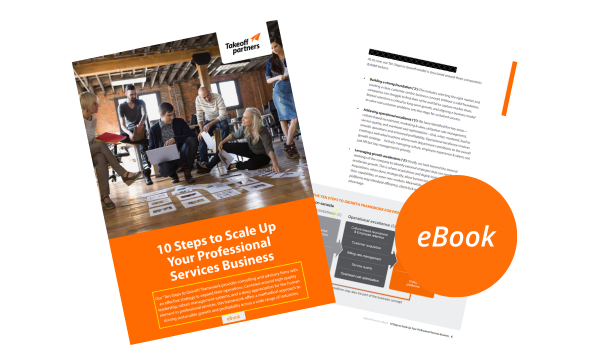Winning traction: Creating customer experiences that translate into business growth

Last time in our article series about the Success Factors of internationalizing B2B software and services we covered ‘Positioning’. If that sounds like marketing, then the fifth success factor in our framework, ‘Traction’, will sound more like sales and customer experience management.
1) Getting started: Verifying customer benefits
When a new business starts, it builds on an idea of providing a solution to a customer problem that needs one. In line with the popular lean thinking, startups these days strive to demonstrate customer successes and the viability of their product from early on; starting with the very first customer cases.
Demonstrating success may happen through
customers informally voicing their support. Yet the best companies make systematic
customer experience management, with KPIs, a priority from the start. This may
also be a great way for a startup to communicate the quality approach of their
team to potential investors.
2) Getting ready: Maximizing the international reference value of early customers
Once the decision has been made to reach for international growth, any existing customers with reference value in the target market will come in handy. These might include global brands with a local presence in multiple relevant locations, or for instance reference customers from the same or adjacent industry.
Setting KPI’s, it’s a good idea to track
progress in the home market separately from the investments in
internationalization. This will help maintain a clear understanding of which
results are attributable to which actions.
3) International market entry: Winning the first customers overseas
Leveraging the reference value of its existing
customers, the company now manages to engage in its first business deals abroad.
Incentives such as discounts or pilot periods may come into play; the most
important thing is to win the first customers outside the home base. Equally
important is to make the new customers happy and keep them that way: Each new
customer is a potential reference that helps bring the subsequent customers
on board.
4) International growth facilitation: Coordinated cross-border sales
Scaling up the international sales efforts is essentially about repeating the same activities as during the first three phases: Approaching new prospects overseas, and using relevant reference customers in opening doors and provoking meaningful discussions.
Two things remain key: Systematic planning of the
sales efforts, and systematic management of customer satisfaction in order to
ensure the reference base stays strong. The first one requires efforts in
particular from sales leadership; proper coordination will ensure that local sales
people will be able to leverage potentially valuable reference customers from another
region or industry. On the other hand, an existing customer relationship typically requires continuous maintenance efforts to stay fresh and current,
i.e. referable.
5) Running a global business: Nurturing the global followership
Over time, the most rapid international growth
phase evens out and the company enters a “new normal” in running a global
business. Naturally generating new business remains a priority, yet the
relative focus will now shift towards excellence in all operations that at the
end of the day will translate into the customer’s experience.
One important, even if indirect, part of a great customer experience is the financial success of partners. During rapid international growth many companies are forced to burn more cash that they are able to generate through organic growth. Hence one part of the operational excellence effort is to demonstrate, at latest at this stage, sustainable profitability – another proof for the loyal customers that their relationship with the company is on a solid base.
Subscribe to our thinking on LinkedIn, Twitter
and Facebook to stay tuned!
About the Takeoff
Success Factors™ framework
The Takeoff Success
Factors™ framework is a summary of best practices in
internationalizing B2B software and service businesses. It grows from the
combined experience of the Takeoff Partners team in taking businesses global. The
proprietary framework is a unique checklist for entrepreneurs to help plan for
their company’s internationalization from ‘flight preparations’ all the way to
reaching the ‘cruising altitude’.






